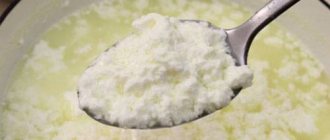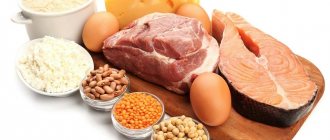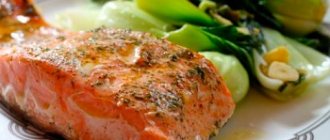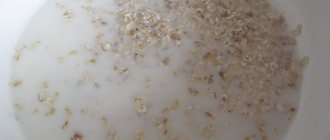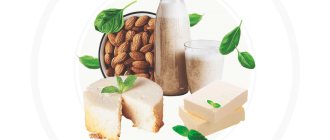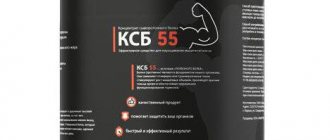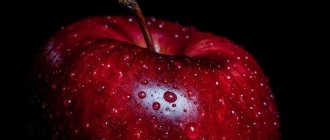Composition and nutritional value
Milk contains about 200 mineral and organic substances, the combination of which makes it a valuable and healthy product:
- Water - 85-90% of the volume.
- Squirrels. Globulin, casein, albumin are absorbed by 98%. Casein has a positive effect on cerebral circulation. Globulin increases the body's immune properties. The most valuable is albumin due to the increased content of tryptophan and amino acids. In terms of amino acid content, milk protein is superior to meat and fish protein.
- Fats. Milk fats are easily absorbed by the body (up to 96%) due to their low melting point (350C) and emulsion state. They contain all fatty acids, as well as lecithin and fat-soluble vitamins A, E, D, K.
- Carbohydrates. Milk sugar (lactose) is 98% digestible. Inferior in sweetness to sucrose. Lactose is necessary to ensure the normal functioning of the nervous and cardiovascular systems. Lactic acid formed by lactose normalizes intestinal microflora and also helps the body absorb calcium and phosphorus.
- Macro- and microelements. One glass contains a quarter of the daily requirement of calcium and phosphorus. Dairy products also contain other macroelements - chlorine, magnesium, sulfur, sodium, potassium. Microelements in milk include iron, copper, iodine, etc.
- Vitamins B (B1, B2, B12, B6), A, D, E, PP. One glass provides 21-22% of the daily value of vitamins B2 and D, 15% of vitamin B12.
- Enzymes. These are substances that accelerate biochemical reactions in the body. Milk contains up to 100 enzymes.
Types of fundamental product
Depending on the methods of production and storage, we can distinguish the following types of milk:
- Whole is a completely natural, raw substance that has not been subjected to even the slightest manipulation other than straining. Today, this species can only be purchased on agricultural farms or from rural residents.
Important! Buying milk by hand is risky, since each animal must undergo a medical examination twice a year and have the appropriate medical record.
- Pasteurized. This product was heated. Long pasteurization - 63-65 degrees for 30 minutes, short 85-90 degrees for a few seconds. In this case, the liquid warms up to 98 degrees. This process kills all microorganisms in the useful substance, which increases shelf life. The value of such a drink is several times lower compared to whole drink.
- Ultra-pasteurized - a product that is prepared by heating the substance to a temperature of 120-150 degrees for about 2-3 seconds. After warming up, the drink is distributed under sterile conditions into sealed bags. After such manipulation, the sealed pack is stored for more than a month.
Important! Ultra-pasteurization ensures that all beneficial substances and bacteria are killed.
Calorie content
The calorie content of milk depends on its type (cow, goat, sheep, mare, etc.) and the method of processing.
Cow
The most popular milk on the market. The fat percentage indicates the milk fat and lactose content, which determines the calorie content.
| Milk fat content (%) | Calorie content per 100 grams (kcal) |
| 3,6 | 62 |
| 3,2 | 59 |
| 2,5 | 52 |
| 1,5 | 44 |
| 1 | 41 |
| 0,7 | 38 |
| 0,5 | 35 |
| 0.1 (low fat) | 31 |
The calorie content of homemade cow's milk before processing is quite high - 64 kcal per 100 grams. For the dietary diet, the most popular milk is 1.5-2.5% (calorie content 44-52 kcal).
In terms of nutritional value, it is equivalent to products with a higher degree of fat content - protein content (2.9 g) and carbohydrates (4.8 g).
Goat
The calorie content of goat's milk exceeds the calorie content of cow's milk - 68 kcal per 100 g. It has a higher content of albumin, phosphorus and calcium. The content of B vitamins is 1.5 times higher.
The product is easier to digest and is recommended for baby food, allergy sufferers, as well as for diets and gastrointestinal diseases.
Sheep
Sheep milk differs from cow milk in its high proportion of protein (6 g) and fat (7.7 g), as well as increased density and acidity.
Its calorie content per 100 grams is 109 kcal.
Kobylye
The calorie content of mare's milk is 50 kcal. It is bluish in color and has a sweet taste. It has bactericidal properties.
camel
A thick, sweetish drink with high healing properties. Calorie content is 82 kcal.
Buvolinoe
Contains a large amount of proteins, fats and minerals. Energy value 106 kcal.
Deer
High calorie content - 217 kcal, as well as nutritional value - the fat content in 100 g of milk is 19.2 g.
Vitamins in milk
The main vitamins in milk are vitamins A and B, some amounts of ascorbic acid, thiamine, riboflavin, and nicotinic acid. Their content is subject to significant fluctuations. In the summer, when animals eat succulent green food, the content of vitamins in milk increases. In winter, due to the transition to dry food, the amount of vitamins in milk decreases. In the future, the content of vitamins depends on the conditions of storage, transportation and processing of milk. The average content of ascorbic acid in milk is 6.6-18.9 mg, thiamine 370-485 mcg, nicotinic acid 1500 mcg, riboflavin 952-1580 mcg, vitamin A 0.1-0.35 mg, carotene 0.08-
0.23 mg per 1 l. The calorie content of milk is low and averages 65-66 kcal per 100 g of product.
Milk contains a number of enzymes.
The main ones are: phosphatase, peroxidase, reductase, amylase, lipase and catalase. Readers: 318
Milk composition:
Vitamins:
| Vitamin: | IN 1 | AT 2 | AT 4 | AT 5 | AT 6 | WITH | RR | A |
| in mg. per 100 grams | 0.03 | 0.1 | 47.6 | 0.3 | 0.04 | 0.4 | 0.6 | 0.107 |
Minerals:
| Mineral: | Calcium | Phosphorus | Magnesium | Potassium |
| in mg. per 100 grams | 88 | 61 | 9 | 116 |
Its biological value is complemented by a variety of enzymes, hormones, antibodies, antibiotics and other biologically active substances involved in the functioning of various body systems (hematopoietic, bone, motor, hormonal, etc.).
Which cows have the highest protein and fat content in milk?
The global gene pool of dairy cattle is about 1000 breeds. The fat content of milk from a black-and-white cow (3.6%) that is customary for domestic agricultural producers is by no means a standard. The level of fat in the milk of some cow breeds can reach 6.8% and even 8%, which is similar in fat content to cream.
Owners of Jersey and Ayrshire breeds are especially proud of the quality and fat content of their pets' milk.
The Jersey breed has very ancient roots. Its name is associated with the place of breeding - the island of Jersey, located in the Bay of Saint-Malo of the English Channel. Despite the fact that there is no exact information about the origin of the breed, there is a hypothesis that the breed was developed by mixing the blood of cows from Brittany and Normandy.
The mild maritime climate and the diversity of pastures available throughout the year led to the development of dairy farming on the island of Jersey. To preserve the genetic purity of the breed, in 1789 the island authorities introduced a ban on the import of cattle of other breeds, and already at the beginning of the 19th century the breed began to be actively exported to the USA, European countries (including Russia), Australia, and the islands of New Zealand and to the African colonies.
The breed has a unique color in its own way - the body of the animal is covered with red or light brown hair. The belly and limbs of the cow are often covered in white spots. Sometimes the suit has dark shades. The cow's nose is dark brown, and the hooves and tips of the horns are also dark.
Jersey cows, although small in size (height at the withers is about 120 cm), have a proportional build. Live weight varies depending on the breeding location. Thus, the largest cows are found in the USA and Denmark, where the weight of calves at birth ranges from 18 to 22 kg, while most cows weigh from 400 to 450 kg, and bulls from 600 to 730 kg. However, it is in these countries that the weight of individual cows ranges from 500 to 520 kg, and the weight of bulls even reaches 800 kg.
The breed is characterized by high early maturity and productive milk yield. However, its distinctive feature is the consistently high protein content and excellent fat content of the milk. As noted by the German Cattle Breeders' Association, the average milk yield of 2,190 cows at the age of 5.3 years was 4,504 kg. The average protein content in cows' milk is 4.13%, and fat content is 6.19%. Similar measurements were made in Denmark. There, the average milk yield was 4453 kg, and the milk fat content was noted at 6.14%. Particularly productive individuals give milk yield from 8.5 to 10.2 thousand kg, and the fat content in their milk ranges from 7.0 to 7.4%
The highest productivity potential of Jersey cows can be revealed only with excellent management and a balanced feeding ration. Unfortunately, it is not recommended to breed this breed in genetic purity in its native country. The fact is that it is impossible to create unique and native natural conditions for the breed on the island of Normandy in our latitudes. Therefore, for the natural and climatic conditions of our country, the most acceptable option remains the selection of the Jersey breed with other dairy cows.
Thus, domestic and foreign studies suggest that crossing the Black-and-White and Jersey breeds gives good results. The results of selection are more impressive in size, in contrast to the Jersey breed, and the protein content in the milk of cows and its fat content increases in relation to the Black-and-White breed. At the same time, raising such half-breds for dairy production in Russia is becoming highly profitable due to the fact that the cost of their feed is significantly lower than that of feed for purebred Jersey cows.
Milk in other servings:
50
| Qty | A portion | Calories | In the counter |
| 100 g | 50 | ||
| 122 | 1 cup = 244.8g | 122 | |
| 15 | 1 fl oz = 30.57g | 15 | |
| 489 | 1 liter = 978.86g | 489 | |
| 8 | 1 tablespoon = 15g | 8 | |
| 3 | 1 teaspoon = 5g | 3 | |
| 227 | 1 lb = 454g | 227 | |
| 122 | 1 glass = 244g | 122 |
Almost skimmed: energy value of milk 1.5%
The energy value of milk depends on the amount of fat in its composition. The calorie content of milk with 1.5% fat content is only 47 kcal, and the amount of fat per standard measure is 1.5 grams. Such a product is considered practically dietary, but is still healthier than skim milk, in which the harmonious ratio of nutrients is disturbed. It can be used in children's kitchens and offered to older people without fear.
The benefits of milk for the body
The benefits and harms of cow's milk have been disputed for many years. The rich composition and vitamin complex may suffer from the conditions in which the cow is kept. In general, the benefits to human health include the following effects:
- A unique source of nutrients and vitamins that completely saturate the body.
- A large amount of calcium will have a positive effect on the beauty of your teeth and the strength of your bones. That is why those who like to drink a mug of steamed drink are much less likely to seek the services of a dentist. In addition, the risk of osteoporosis is reduced.
- Proteins grow and strengthen muscle mass, which is why the product is especially popular among athletes. Its popularity is not inferior to chicken eggs.
- Vitamins reduce stress levels. That is why drink a glass of warm milk at night after a hard day at work. Just one glass and the tension that has accumulated during the day will disappear. Women experience relief from premenstrual syndrome.
- The product helps to gently reduce blood pressure, reduces the risk of stroke and other heart diseases.
- Getting rid of heartburn, improving the digestive system, normalizing the feeling of hunger.
- For a long time, a bottle or pack of this drink has been given to workers in difficult industries in order to strengthen the immune system and restore vitality.
- The drink will relieve stress, help you cope with anemia and help you rehabilitate after tuberculosis.
Milk is a tasty and healthy product that can keep the human body in good shape and help prevent diseases. That is why many people should definitely include this healthy drink in their daily diet.
What is milk protein? Sources, benefits and harms of milk proteins
You often read and hear that milk protein is for some reason not suitable for bodybuilders and that many leading foreign athletes do not use milk at all in their diets. Is this true?
While it is true that many top bodybuilders have eliminated milk in their nutritional and training programs, the rest is not true. Milk as such is excluded from the diet of competitive bodybuilders due to the high fat content in this product and the presence of a number of substances that are not very useful for the adult body, and not at all because of the “harmfulness” of milk protein.
Milk protein sources
Milk contains two types of biologically valuable proteins: casein (calcium caseinate) and whey proteins (albumin and globulins). On average, 100 ml of cow's milk contains 3.2 g of protein. Of these, 80-87% is casein , 10-12% albumin and 3-6% globulin .
Today, many leading sports nutrition manufacturers, including Russian ones, actively use casein and whey protein in the production of protein mixtures for strength sports athletes. As studies show, in terms of biological value, casein comes close to egg white and is ahead in this indicator of such generally recognized biologically valuable products as fish and meat.
Casein
Here in Russia, casein is isolated from skim milk. To do this, the milk is acidified to Ph—4.5 and heated to a temperature of 37°C. The resulting clot is washed with water and dried to a powdery state. This is casein. It can be used alone or in mixtures and combinations with other proteins.
Casein is present in milk in several forms - α, β, γ. The indicator that most distinguishes one form of casein from another is the phosphorus content. The largest amount of phosphorus is in a-casein (1%) and 10 times less in γ-casein (0.1%). The main form of casein is α-casein, which makes up 85% casein. The most important property of α-casein is that when milk coagulates, only the α-form passes into the curd, while β-casein and γ-casein remain in solution.
Albumin and globulin
Albumin and globulin are whey milk proteins of high biological value. Albumin contains a significant amount of sulfur in its formula and contains more essential amino acids. In its physicochemical properties, crystalline lactoalbumin is close to blood serum albumin.
Whey proteins in milk are usually isolated by ultrafiltration. When skim milk is passed through an ultramembrane, whey proteins are retained while other substances pass through. After this, the resulting whey protein concentrate is also dried to a powder state (milk protein concentrate).
Coprecipitate
In terms of their amino acid value, casein and whey proteins are quite comparable. Casein has less methionine, and whey proteins have less lysine. However, recently protein manufacturers have preferred to use a combination of casein and whey proteins - the so-called coprecipitate. The fact is that in this protein combination the complex of amino acids necessary for protein synthesis to begin is contained in the most optimal form.
Coprecipitates are obtained from skim milk by co-precipitation of casein and whey proteins under the simultaneous action of high temperatures and a coagulant (calcium chloride or acid). Complex protein precipitation allows you to increase the degree of utilization of milk protein substances and increase the biological value of the product by improving the balance of essential amino acids, especially sulfur-containing ones.
trenexpert.ru
Almost like homemade milk with 3.2% fat content
The fat content of the product is achieved by dissolving a certain amount of cream in skim milk. The calorie content of 200 ml of milk with 3.2% fat is 120 kcal, since 100 grams contains 60 kcal. As we can see, even the fattest type of product does not have too high an energy value, which means you can safely use it on a diet. In addition, this milk is excellent for making homemade yogurts, kefir and cottage cheese. The finished fermented milk is very thick and has a unique creamy taste.
Who should drink milk?
Of course, athletes primarily consume milk to build muscle mass, but they also receive a lot of calories along with milk. What about people who are watching their weight?
There is no need to completely give up this product, especially knowing how much protein is in milk. You just need to control its consumption. 1 cup of milk a day will be an excellent snack and will saturate the body with the necessary amount of protein.
Milk is also necessary for women during lactation and children. For nursing mothers, this drink will help restore the amount of milk produced by the glands, and the woman will be able to feed the baby on her own. Children need milk for normal development and growth of the body. In addition to casein and whey, this product contains a large amount of vitamins and, most importantly, calcium. By the way, calcium is perfectly absorbed in milk with a high fat content.
Baked milk:
A distinctive feature of its technology is heat treatment, which determines the color and taste of the product. As a result of heating to a temperature of 95–99 °C and holding at it for 3–4 hours, it turns brown due to the formation of special substances (melanoidins) during the interaction of protein amino acids with milk sugar.
At home, you can get delicious baked milk by boiling it and immediately pouring it into a clean thermos rinsed with hot water and holding for 6–7 hours.
A:
